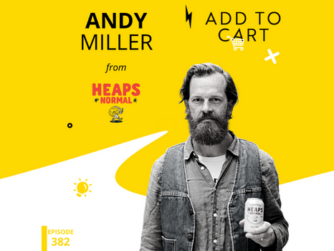In this episode of Add To Cart, we are joined by Simon Griffiths, Co-founder and CEO of Who Gives A Crap, a direct to consumer toilet paper brand who have revolutionised the product, offering subscription, funky packaging and a certain cool factor. What’s more, they donate 50% of their profits to help build toilets in developing nations with a goal to make sure everyone in the world has access to proper sanitisation. During the chat, Simon covers how he came up with the idea for Who Gives A Crap in his bathroom in less than a minute, the challenges and growth that they saw during the great toilet paper shortage of 2020 and why he once sat on a toilet for 50 hours.
“We were basically running a secret online toilet paper club, which was probably the most popular club in the world at that time“
Simon Griffiths
Questions answered in this episode include…
- How did you end up sitting on a toilet for 50 hours?
- How did WGAC problem-solve the 2020 toilet paper crisis and keep customers happy?
- What are the key elements of a successful social impact business that people find most surprising?
Solving world sanitation one toilet roll at a time
We donated almost $6 million or $5.5 million, which was an awesome outcome, I think, in a year where particularly a lot of non-profits really needed the extra money, so purse strings tightened up, we knew a lot of our partners were going to have trouble fundraising. And so for us to be able to give an extra large donation this year was amazing.
But on top of that, I think the big picture is, well, we’re only funding a handful of organisations. There’s still two billion people globally without access to a toilet and A$6,000,000 is the tiniest splash in a huge bucket to try and solve that problem, if we’re really going to truly make a difference in a way that’s meaningful and accelerate the pace at which we solve this. We have a 30 year goal in our company to make sure everyone in the world has access to a toilet and we’re on track to do what we believe is necessary to reach that goal.
If you can do it with toilet paper, then you should be able to do it with any other products. That’s what we want to show with our business model. The impacts that we have, the donations that we make is important, but the most impact that we can have is by showing that our business model can be successful at scale, that other people can come and copy it and hopefully do an even better job than us and it can help solve some of these other problems that are out there, other than just sanitation.
Have you heard about the secret online toilet paper club?
2020 was a bit of an exception to the rule. The last couple of days of February, we saw that daily sales were up a little bit. On the first day of March, our daily sales two times, next day, up five times, the day after that up 12 times, the day after that we were going to do 30 to 40 times a regular day of sales. Our customers basically have sent us viral at this point, you know, telling everyone why are you buying toilet paper from the supermarkets, you know, go to Who Gives a Crap? I think we basically became Australia’s largest retailer of toilet paper, because all of the major supermarkets were sold out. And so all of the traffic was basically getting driven to us. That month we had one in 20 Australians visit our website.
So, when you’ve just done a month of sales in the first three days of the month, that creates some pretty big operational backlogs. And so it took us about a week or two to clear out the backlog of orders, because our warehouses couldn’t pick and pack fast enough to dispatch the number of orders they needed to the next day. So it took a week and then our customers are saying, hey, where’s my product I ordered from you a week ago?
We had a huge customer service backlog that took another week to work through. And once we cleared that, we started to get our head into the mindset of…how are we going to satisfy this wait list? How do we do this? How do we get toilet paper to the most people possible? Because this isn’t just about shipping the regular orders that we have, there’s an actual societal problem here where people need a product that they can’t get. And we have a lot of it in our warehouse. We have to figure out how to get that into as many hands as we possibly can and the biggest constraints are inventory, customer service volume, and our warehouse. Pick pack and send. So even if we’ve got a 747 load of product in our warehouses, we couldn’t pick, pack and send it fast enough. And so the problem ended up not being not having enough inventory because we technically, we could repack as much as we needed to and our warehouses to create the number of orders.The problem was actually that our warehouses couldn’t ship more than however many thousand orders a day.
So we ended up figuring out that upper limit. And then we hired and trained 25 customer service freelancers in a week, so we could triple our customer service volume. And then we broke down our inventory into smaller pack sizes so that we had more orders to ship. So we took our big 48 row boxes and split them into two 24s. And that basically doubled the number of orders that we could dispatch.
And so then we set up an invite only version of our store slowly, drips and emails every single day to invite just enough people through the store on a target conversion rate to take our warehouses to their absolute daily maximum limit. And we did that for eight weeks, basically running a secret online toilet paper club, which was probably the most popular club in the world at that point in time. And we eventually cleared through what was more than about 600 and something thousand people on the wait list, which was just mindbogglingly cool. Basically broke every single email marketing metric you’ve ever seen!
A shot in the arm for staff
We got to the end of June, we’re like awesome, we’ve done it! We’ve cleared the backlog. Now let’s let people go on holiday and take some time off. And then Victoria’s cases came up. All of our Australian team that was in Victoria, borders got shut. Everyone’s holiday plans got cancelled and people are burnt out, you know, too much annual leave available, nowhere to go and it kind of created a different problem for the team, which we weren’t quite expecting.
That was like really a once off scenario where we felt like the whole team was at risk of burnout, because everyone had just pushed themselves to get to the end of the financial year, basically, and clear that backlog of the wait lists. We realized that people’s productivity just wasn’t where it should have been. And we felt that in ourselves. We could also see that when we were surveying our staff in our weekly surveys, that we started through COVID to check how the team was going. And so we ended up saying, we need a circuit breaker, we’ve got to do something to try and like give people a bit of a jab in the arm and give them a break.
And so we said to the whole company, everyone’s taking a week off. In two week’s time, over two week periods, 50% off one week, 50% off the other week. You’ve got two weeks to plan for it so you can get all your work done. You have to choose what work you’re going to delay. And in that two weeks, there’s no internal meetings. So you will not be letting anyone down while you are off. And you’ll be able to get into deep work in the week where you’re on. So yeah, we made that change. It wasn’t quite, we’ll give you a week off. It was, we’ll give you four days of leave for free if you take one day of leave. We had a hundred percent uptake on that offer, as you can imagine.
It was a pretty amazing experiment and we came out the other side of that and productivity shot through the roof. And that was the shot in the arm that I think I certainly needed to get me through to Christmas.




